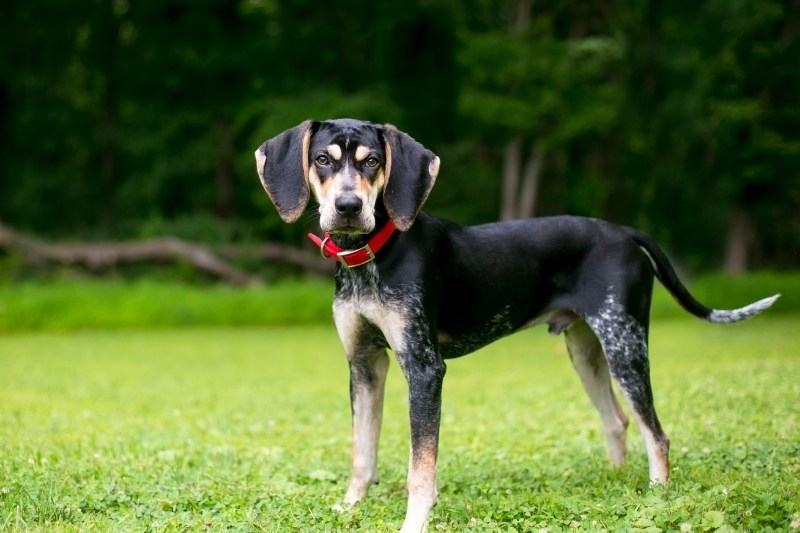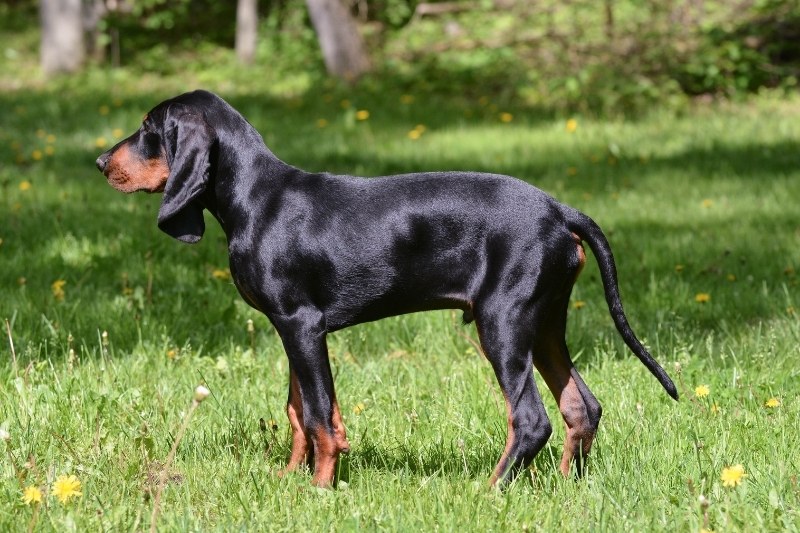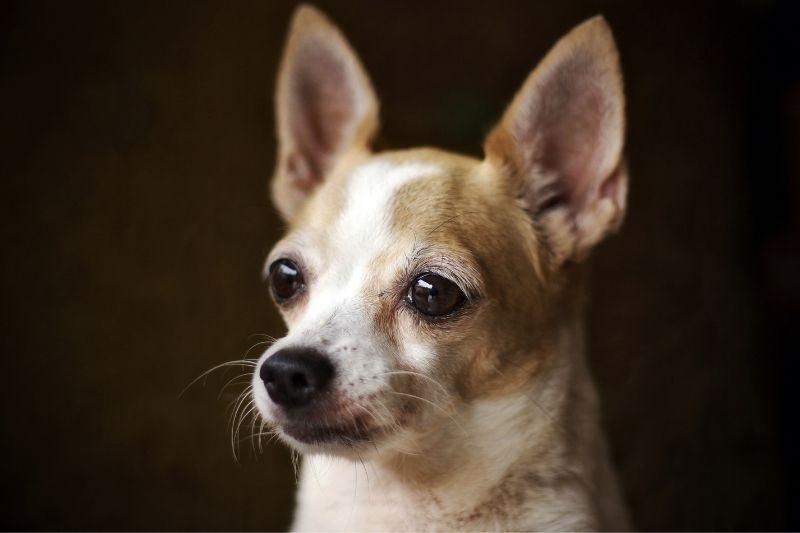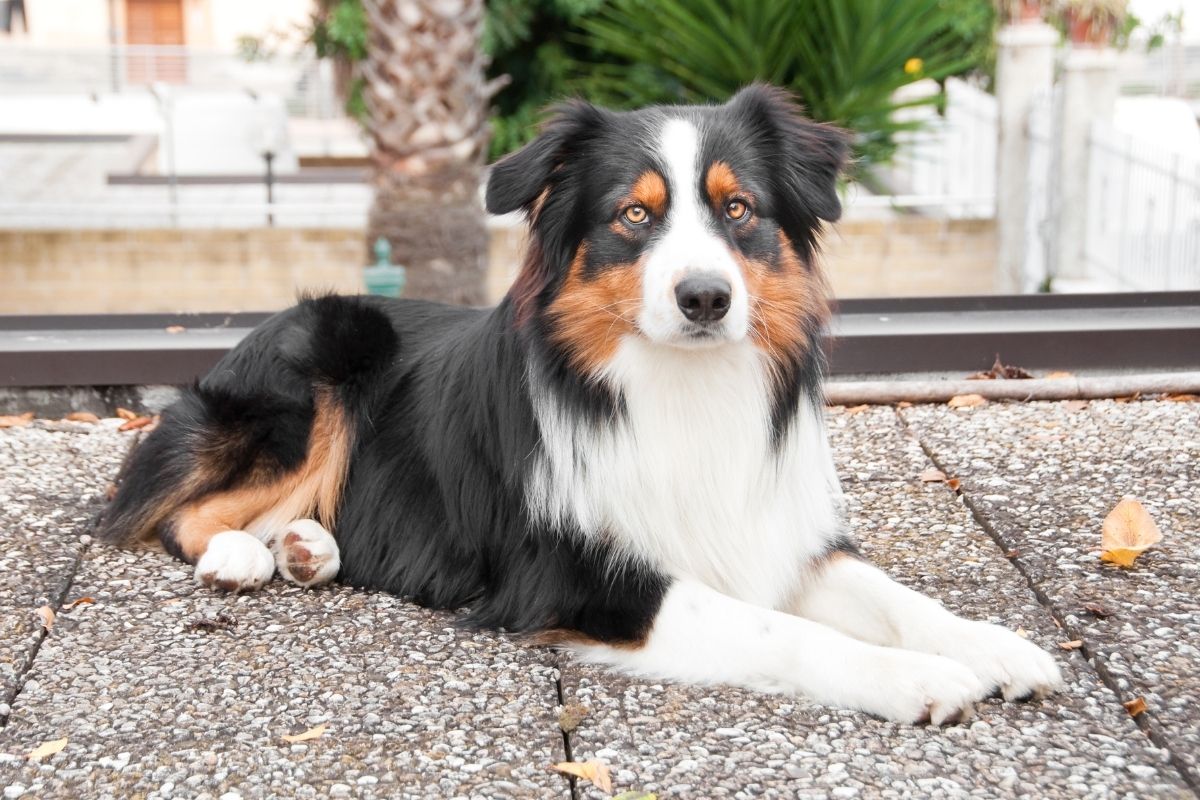The different types of Coonhounds (with pictures!)

As is the case with many Hounds, Coonhounds are tenacious, athletic, and always follow their noses. These sporty dogs are the ultimate raccoon hunters and have an abundance of energy from dawn until dusk.
Coonhounds are working dogs that make great companions for active, experienced dog owners. They can, however, be a bit strong-willed, vocal, and difficult to train. But did you know that there are a couple of different types of Coonhounds? Not just the American English Coonhound that most people think of.
Read on to discover the different Coonhound dog breeds accepted by the American Kennel Club and which would be best for your family.
6 different types of Coonhounds
The AKC officially recognizes 6 different types of Coonhounds. All originally bred for hunting, these doggos have a lot of similarities. There are, however, a few key differences between these Coonhound breeds.
American English Coonhound

Also known as the Redtick Coonhound, these pups have a distinctly Beagle look about them (some say). On average they grow to weigh between 50 and 70 pounds and to a height of 25 to 27 inches. If well cared for, with plenty of exercise and nutritious food, they can live to be twelve years old.
American English Coonhounds are excellent hunters and thrive when on a chase or if they have a job to do. They need a lot of vigorous exercise to keep them physically and mentally fit and have a stamina that's hard to beat.
Although somewhat stubborn when out hunting raccoons, these dogs can actually be really affectionate around their family members and even get on well with children. They have bundles of energy, though, and can be very vocal which novice owners will find difficult to control.
These pups do best with experienced owners who can train them in a fun and engaging way whilst keeping their energy levels under control. Something else that's worth noting with these Coonhounds is that they don't do well being left alone. They're pack dogs at heart and can become lonely and very vocal if left alone for a long time.
A great thing about this breed of Coonhound is that they're minimal shedders that don't need a lot of grooming. They have short coats (in a beautiful red and white pattern with ticked patches) that only need to be brushed weekly to keep them looking slick.
Bluetick Coonhound

Bluetick Coonhounds are the oldest dog breed on the list and stand a little taller than American English Coonhounds. They can be 27 inches tall and males can grow to weigh 80 pounds. Just like other Coon Dog breeds, the Bluetick Coonhound is an excellent hunter that can pick up the scent of a raccoon that's a week old!
These doggos are muscular, sleek, and very athletic. They have strong bodies that can run for miles – meaning they need a lot of exercise. They do best when they're put to work hunting coons but they'll also enjoy specific doggie classes and sports.
They'll love chasing friends around the pup park or going for long walks and hikes with their family. Just remember to keep an eye on them and make sure they return to their name – these dogs are prone to following their noses!
Like other Coonhound breeds, Blueticks get bored easily. You need to make sure they have plenty of mental stimulation, fun training sessions, and that they're not left alone for long periods of time. These doggos can get on well with other pups and can be especially affectionate. They require socialization and training from puppyhood but with that, they can make loving, fun, and energetic family members.
Black and Tan Coonhound

Black and Tan Coonhounds are adorable, passionate, and playful. These long-eared doggos have buckets of energy and love to spend time goofing around with their family. Any energy that's not used up hunting raccoons will happily be spent playing with children in the backyard, exploring on walks, or playing with their favorite toy.
The Black and Tan Coonhound is a bigger Coonhound breed and can weigh between 65 and 110 pounds. They can also stand between 23 and 27 inches tall. Like other Coonhounds, they live to be around 11 years old.
These laid-back dogs can be a challenge to train. They are stubborn and tend to do as they please (chase after interesting smells). Consistent training from a young age is necessary but it's best to keep training sessions short and sweet. These pups can easily get bored and decide there's something more fun to do elsewhere!
The night hunter (as the Black and Tan Coonhound is sometimes called) isn't an apartment dog. These pups need space to roam to keep them entertained.
They can also be quite vocal, which most neighbors won't like. As with other Coonhound varieties, this colored Coonhound shouldn't be left alone for long periods of time. They're family dogs and can become nervous if they feel lonely.
Redbone Coonhound

Redbone Coonhounds are definitely one of the most attractive pups on the list thanks to their beautiful red coat. These were one of the first scent hounds bred by Scottish settlers for the sole purpose of raccoon hunting. Because of their origins, these dogs are athletic, strong, and very fast.
They make excellent family dogs for active families who can provide them with plenty of entertainment and exercise. They're intelligent pups and do well competing in doggie sports, especially ones in which they can use their noses to excel!
Redbone Coonhounds can weigh up to 70 pounds and have an average height of 22-27 inches. Unlike other Coonhounds, these doggos have a longer life expectancy of 12 to 15 years. They also shed less than other Coonhounds and only require the odd brush to keep the worst of their loose hairs under control.
These confident and friendly dogs make great pets, but, as with all Coonhounds, they're not for novice owners. They tend to follow their own noses and wander off from time to time. Short, fun training sessions are crucial.
Some owners say that the Redbone Coonhound has a milder temperament than other varieties, meaning it's sometimes possible for them to live in apartments. They still require plenty of exercise and ways to keep them engaged, but they're less dependent on space to roam in their home.
Plott Coonhound
The Plott Hound differs slightly from the other Coonhound breeds on the list because it has a different origin. Other Coonhounds were bred from English Hounds but the Plott Hound was originally bred from German Hanover Hounds. In fact, they get their name ‘Plott' from the man who brought the first German hounds to America – Johannes Plott.
Plott Hounds can grow to weigh 60 pounds and be 25 inches tall. They still have the adorable hanging ears we associate with Coonhounds and a slick, glossy coat that often has a brindle pattern. Brindle is a beautiful coat pattern that has streaks of light and dark markings which can be tan, liver, chocolate, orange, brown, blue, and black.
Plotts are excellent scent hounds and were often used to hunt bears and large game. Because of their pack hunting nature, they do really well in households with other dogs. Socialization is really important for these dogs as they love being part of a group.
They don't do well being left alone and hate to feel lonely. They're happiest when they can run around the park with their friends and family!
Compared to other Coonhounds, they're fairly easy to train and are less likely to wander when off the leash (although still keep an eye on them)!
Treeing Walker Coonhounds

The Treeing Walker Coonhound (as the name would suggest) is an expert in chasing prey up a tree when hunting. This allows them to watch the prey as their owner arrives. These Coonhounds were first developed in the 1700s by Thomas Walker and are descendants of the English Foxhound (as you can tell by their floppy ears and tri-colored coat).
These pups are loyal, courageous, and very loving towards their family members. Because they're pack dogs at heart, they get on well with other doggos and can even be trained to get on with cats.
They do need an experienced owner, though, who can keep their high levels of energy under control and offer plenty of entertainment. They need a lot of exercise and to put their brain to good use.
As well as training, socialization is key for these pups. They're naturally a very friendly breed so it shouldn't be hard. Because they are so social, they don't like being left alone and love to always have a companion to play with.
And there they are, all 6 types of Coonhounds. There are lots of similarities between them, such as their hunting instincts, but there are also quite a few differences. Do you have a favorite?
I’m Charlotte, a content and copywriter from the North of England and currently living in Berlin. Animals have always been a huge part of my life, so writing about dogs is a total pleasure! I love all kinds of dogs and their cheeky personalities, but I’d have to say Weimaraners are my favourite!







